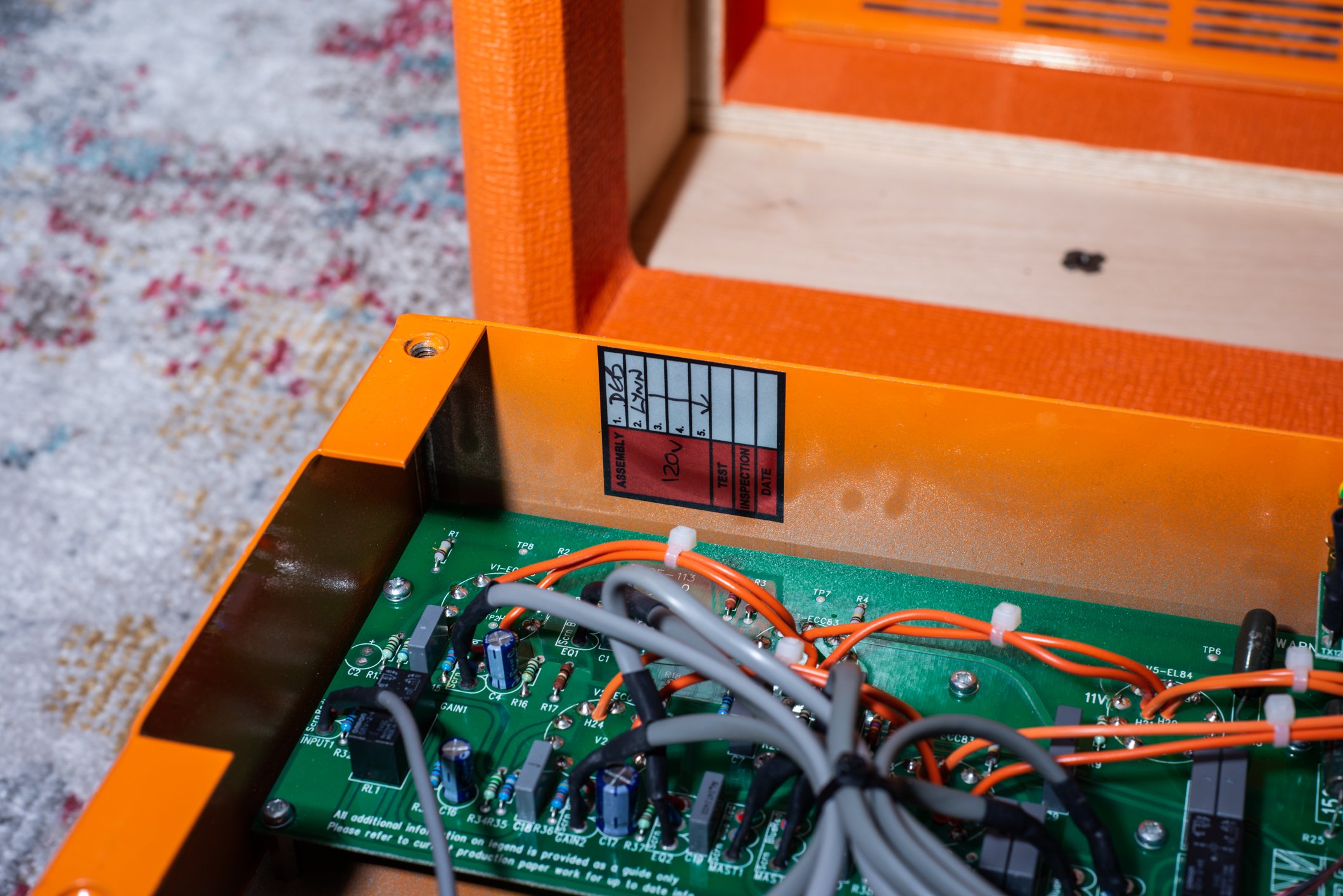2009 Orange AD30HTC
Specs
2 Channels
30w Output
4x EL84 Power Tubes
4x 12AX7 Preamp tubes
1x GZ34 Rectifier Tube
Class A
Overview
This AD30 HTC is the updated version of the AD30 single channel, which was the amp that is arguably responsible for the Orange resurgence of the last 20+ years. The Orange name wasn’t doing so well in the 80s, and the 90s Gibson purchased rights to the name. A few Gibson-made reissues (still made in the UK) were launched but didn’t sell well, and the license to use the name was not renewed. That’s where Adrian Emsley comes in - designing the AD30 and AD15 amps back in 1998, to rousing success. Afterwards, there’s quite a few spinoffs of the AD series, such as the AD50, AD140 Lead, and later the two-channel AD30 (as pictured) and AD140.
The AD30HTC has a very strange configuration unlike most other amps. It has two almost identical channels, each with their own gain, volume, and EQ controls, which itself isn’t unheard of, but the odd thing is that each channel has its own phase inverter tube feeding the power section. I can’t think of many amps with a pair of phase inverters! Both channels share the same topology, with only minor differences in circuit values - specifically, C1/C18 and C4/C20. It’s hard to hear much of an audible difference when playing the amp, but I suppose a proper A/B test would make it more clear.
Similar to the Rocker 30, this amp has a Class A cathode biased power section with a quad of EL84’s. The similar AD140HTC shares the same cathode bias, but with a quad of EL34’s, but no rectifier tube. This helps add some low end and this amp is voiced to me very much in the “upper mids” area. It has a lot of cut and a wonderful sounding classic crunch tone, but lacks some of the floor-shaking ability that the Rocker/Rockerverb type amps can do, but that’s probably the point - this amp is designed for more classic tones and that’s part of its success early on. Orange’s high gain amps have really taken off in recent years, but tracing back this amps origin in the late 90s most people thought of Orange for its more old school tones and it makes sense to design an amp around that demand.







